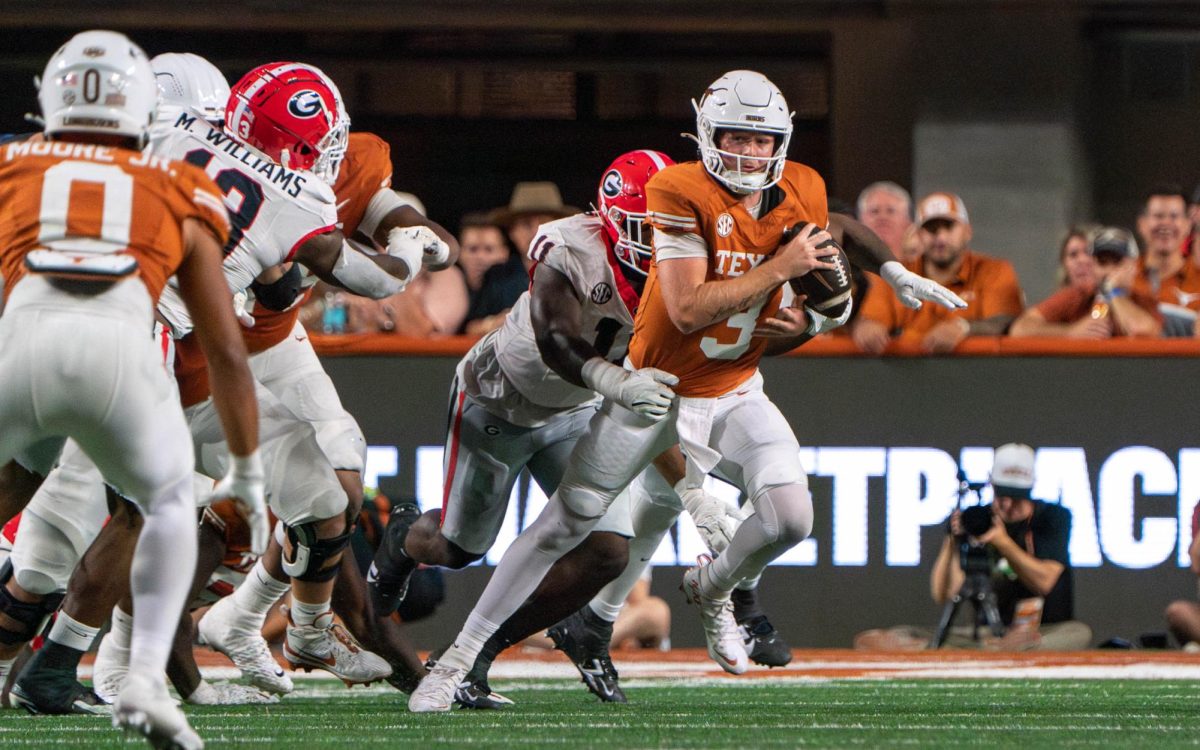UT Tower’s resident peregrine falcon laid her second batch of eggs this year, but they didn’t hatch and were taken to Texas A&M University for research.
The falcon was nicknamed “Tower Girl” by a few bird enthusiasts who observed her progress and egg-laying process, among them Bruce Calder, bird enthusiast and UT alumnus. Calder said he was surprised when he first saw the bird near the Tower on July 21, 2013.
“(The bird’s presence) was astonishing to me since peregrine falcons are not expected to be found in central Texas past about mid-May,” Calder said.
When he saw the falcon, Calder said he decided to take steps to entice her to stay and breed near the Tower. Calder introduced himself to former UT President Bill Powers with an unusual request.
“I gave him a quick 30-second pitch for UT installing a nest box on the Tower in order to entice this rare bird to stick around and breed,” Calder said.
Shortly after, Calder said Powers delegated this to Pat Clubb, former vice president of university operations, who sent it to Animal Make Safe, a group where Carin Peterson coordinates training and outreach.
Peterson said her team secured the nest box for the falcon’s eggs up at the top of the Tower. Peterson also acted as mediator.
“The experts … were kind of feeding us information based on what they were observing, and we were giving information to (Project Management and Construction Services), because they were the ones who had access to it,” Peterson said. “We were saying, you know, ‘Don’t go out there … now it’s okay to go up there.’”
Peterson added that peregrine falcons are fairly rare — they’re listed as threatened in Texas.
Calder said the box was finally installed February 14, 2014, with the hopes that Tower Girl would lay eggs there during the spring.
The bird mostly ignored the nest box until the spring of 2015, Calder said. Even then, no eggs were laid until a year later. Most of the eggs were found too late to salvage, and one remaining egg was taken to Texas A&M for analysis and determined to be infertile last summer.
When bird enthusiasts, including Calder, noticed she was laying eggs again this past spring, the excitement began.
“I’d just like to see it work out for her,” bird watcher and photographer Chris DuCharme told KUT this April.
Peterson said her group eventually removed the eggs because they were past the point of being viable.
“It was decided that there was a date past which the egg would not be viable; it was an estimation but it was a very generous estimation,” Peterson said. “We wanted to give the eggs any chance they had of hatching.”
The eggs were sent to Texas A&M to find out if the eggs were ever fertile at all and if something went wrong.
“We are still awaiting the results; however, we are 99 percent certain that those eggs will be found infertile, as well,” Calder said.
Peterson said her department may set up a webcam to watch Tower Girl next spring.
“We’re hoping to get a webcam up there so we can monitor from the ground,” Peterson said.












